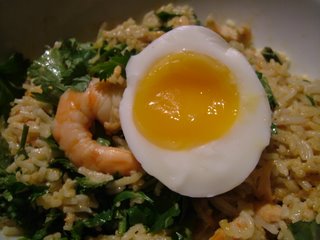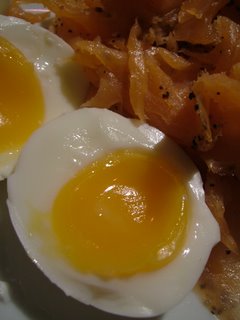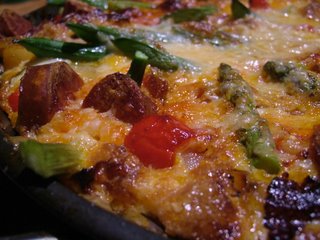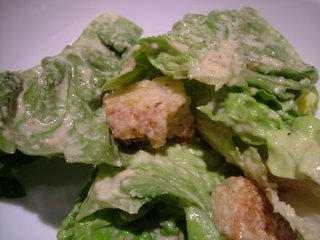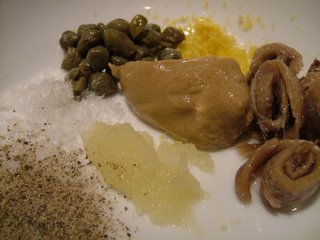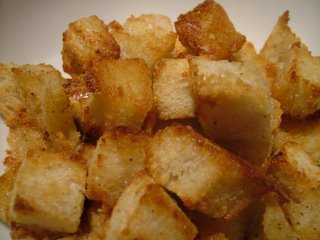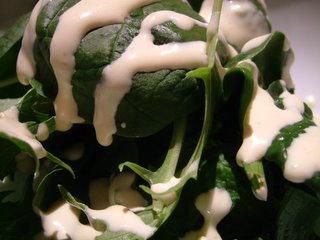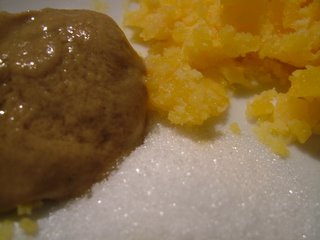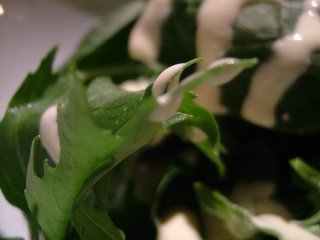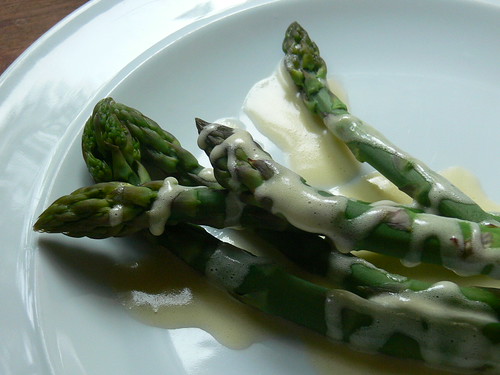 Isn’t eating at this time of year brilliant? The rhubarb is still sprouting away, and now the asparagus is shooting up as well. If you live in Cambridgeshire, it’s well worth making a trip to Burwash Manor Barns in Barton, just outside Cambridge, where they grow tonnes of the stuff. It’s picked fresh daily and sold on-site at the Larder (a very nice deli), where you’ll find a lady outside trimming the stems of an enormous heap of asparagus fresh from the fields, and packing it in wrappers for sale. If you cook it as soon as you get home so the sugars don’t have a chance to turn into starch, you’ll find it amazingly sweet. Supermarket (and, sadly, market) asparagus is never available this fresh.
Isn’t eating at this time of year brilliant? The rhubarb is still sprouting away, and now the asparagus is shooting up as well. If you live in Cambridgeshire, it’s well worth making a trip to Burwash Manor Barns in Barton, just outside Cambridge, where they grow tonnes of the stuff. It’s picked fresh daily and sold on-site at the Larder (a very nice deli), where you’ll find a lady outside trimming the stems of an enormous heap of asparagus fresh from the fields, and packing it in wrappers for sale. If you cook it as soon as you get home so the sugars don’t have a chance to turn into starch, you’ll find it amazingly sweet. Supermarket (and, sadly, market) asparagus is never available this fresh.
English asparagus is a real delicacy. Unlike asparagus grown in hotter climates, it pops up out of the ground relatively slowly, allowing the plant to build up a much greater concentration of sugars. Burwash asparagus is available as Class I and Class II (50p cheaper than the Class I this year) – I’d recommend the Class II packs, which taste exactly the same as the Class I asparagus, but contain spears which are a bit bendier than the ruler-straight Class I. (See picture for extent of bendiness.) The thickness of spear you choose is entirely a matter of personal taste, but do make sure that all the asparagus that you steam is the same thickness, or else it won’t cook evenly.
Of course, dressing your asparagus with melted butter or just dipping each spear into the yolk of a soft-boiled egg makes for a perfectly delicious starter. That said, dressing them with a hollandaise sauce – essentially just butter and yolks with an acidic spike of reduced vinegar – somehow works out to be about ten times as delicious as either butter or yolk on their own.
Hollandaise sauce is a rich emulsification of butter and good vinegar (or lemon juice in some recipes), held together by egg yolks. I always add a little boiling water to loosen the sauce and prevent it from becoming too solid – a very thick hollandaise can be overpoweringly rich.
Making hollandaise isn’t as intimidating or difficult as some make out, but it will need your full attention, so you need to make sure the answering machine gets any phone calls and ignore any cries of ‘I can’t find my shoes!’ from the family for the ten minutes or so it takes to make.
Hollandaise is cooked at a very, very low heat. In order to stop the yolks from getting too hot and turning into an omelette, you’ll be making the sauce in a bain marie or double boiler. I don’t own one of the expensive dedicated double boilers – sitting a mixing bowl on the rim of a pan part-filled with simmering water works just fine and doesn’t take up any extra precious cupboard space. To dress asparagus for four, you’ll need:
2 egg yolks
2 tablespoons boiling water
3 tablespoons good white wine vinegar (I used Maille, which, for no very good reason, keeps turning up at my local branch of TK Maxx.)
225g (half a pat) good butter
2 peppercorns
1 bay leaf
Salt to taste
The quality of your butter is all-important here. I used Bridel from Normandy. Bridel or Beurre d’Isigny is fantastic here because of its rounded and smooth flavour.
Make sure the water for steaming the asparagus is ready and boiling on the hob as you make the sauce – you’ll need a couple of spoonfuls of it for the hollandaise. Throw the asparagus into the water and put the lid on as you start to whisk the butter into the hollandaise – it only wants a little cooking, and should be bright green and ready when you finish the sauce.
Put the vinegar in a small pan with the peppercorns and bay leaf, and simmer it gently until it has reduced to about a tablespoon-full. Remove from the heat but keep warm. Melt the butter and put it in a warm jug.
Place a mixing bowl on top of a saucepan part-filled with water. The water should not touch the bowl. Bring the water to a simmer while beating the egg yolks vigorously with a hand whisk in the bowl. As the bowl warms, you will notice that the yolks start to thicken. Add a tablespoon of the boiling water to the yolks and continue beating until they begin to thicken again. Add another tablespoon and beat until the yolks are thickening once more, then add the vinegar with the bay and peppercorns removed, beating all the time until the sauce starts to thicken up again.
Pour the butter into the egg mixture in a very thin stream (as if you were making mayonnaise). Continue to whisk as you pour until all the butter is amalgamated, then remove the bowl from the heat. Taste for saltiness and acidity. If you want a little more bite to the sauce, squeeze in a few drops of lemon juice. Remove the asparagus from its water and serve with the sauce either drizzled over or as a dip.
Hollandaise sauce freezes well – when you want to use it, just bring it back to room temperature slowly.
A quick and dirty breakfast dish. This is just perfect for Sunday mornings in bed with a tray, the papers and a very good friend. This hash is all made in one pan, salty from the salmon, studded with tart capers and stickily sweet from the sweet potatoes. A good squirt of lime juice to counter that sweetness and a spoonful of herby crème fraîche – who could ask for more?



